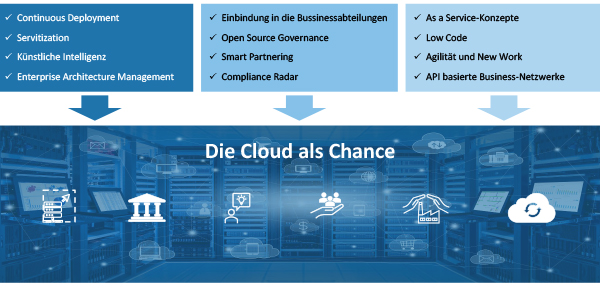
|
New white paper helps define cloud PLM strategyBy Marc Dreesen Companies need flexibly adaptable IT system landscapes if they are to respond more quickly to technological innovations, new market trends and unexpected customer requirements. One possible option is to use PLM from the cloud. In a new white paper, PROSTEP explores the drivers of cloud PLM and what companies should bear in mind on their way to the cloud. 
Many companies still view the cloud and also cloud PLM as an infrastructure issue that is primarily evaluated in terms of cost. In doing so, they fail to do justice to the strategic importance of the cloud in the context of IT infrastructures. The cloud offers solutions to a wide range of challenges that businesses face today. That is why it should be given adequate consideration as an option for a future-oriented PLM infrastructure when defining PLM strategy. One of the major challenges faced is constant technological change, which puts IT organizations under considerable pressure. If smart products are to be developed efficiently, the various disciplines and domains, each with their own heterogeneous IT systems, must be better integrated in the product development process. The interaction between software, electronics and mechanical development in particular will be crucial to success. At the same time, users in the specialist departments want to be able to flexibly integrate the services that external specialists offer in the Internet. The cloud promises greater flexibility in this context. Constant technological change means that companies are developing new business models that make additional demands on the IT. It must ensure access to the operational data of products that have been delivered and the evaluation of this data with the aid of data analytics tools, which today already run in the cloud; or provide software updates over-the-air, which are used to further develop and improve the functionality of the products. In many areas, there is therefore no way around the cloud. Users often need new IT tools in order to perform their tasks and expect the continuous deployment of additional functions with which they are familiar from private cloud applications. Neither the software architectures of existing IT systems nor the processes for software development and implementation in companies are designed for this. Agile process models are only gradually gaining entry into IT organizations. In many cases, they play the role of a service provider who responds to the requirements of the specialist departments instead of proactively developing new solution approaches together with them. IT organizations face the challenge that they are finding it increasingly difficult to meet the growing demands of the specialist departments. Their budgets tend to be shrinking. Qualified employees who are familiar with the latest technologies are hard to find and are correspondingly expensive. The IT infrastructures in companies are often obsolete and can only be scaled up or down with a great deal of time and effort. The cloud makes it possible to outsource not only the infrastructure but also certain basic services to the cloud provider and thus increase the focus of scarce internal resources on the essential issues. Find out more about the different cloud solution, the advantages and disadvantages of cloud PLM, and the cloud strategies being pursued by leading PLM providers in PROSTEP's latest white paper. We also explore how we can help you define a capability-based cloud PLM strategy. You can download the white paper here. 
|
|
| © PROSTEP AG | ALL RIGHTS RESERVED | IMPRINT | PRIVACY STATEMENT | YOU CAN UNSUBSCRIBE TO THE NEWSLETTER HERE. |

